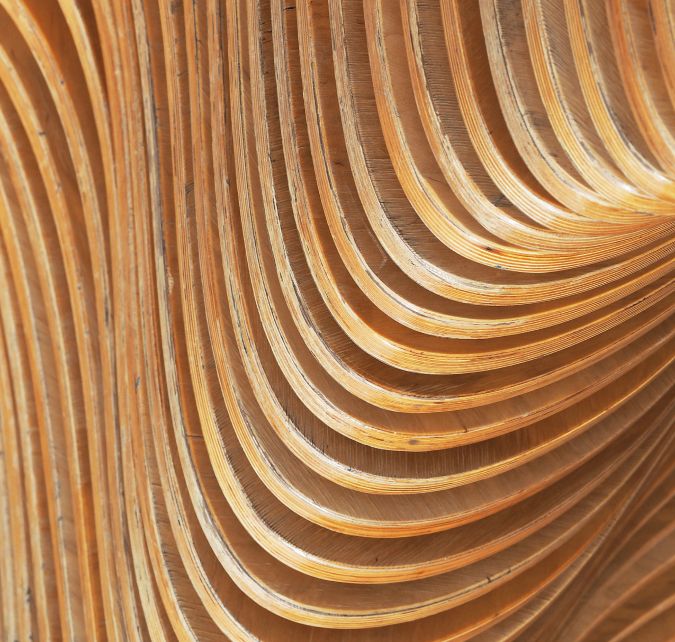

At Plastic Surgery Associates of Santa Rosa, we can help you find the perfect nose that is not too large or wide. Our practice is led by Dr. Francisco Canales, Dr. Heather Furnas, and Dr. Eric Culbertson– experienced plastic surgeons in Northern California who perform this surgery with a conservative approach to allow for the softest and most flattering results. Although rhinoplasty consists of delicate changes, they can be quite dramatic. Get more information on rhinoplasty by contacting us online or scheduling your consultation by calling (707) 537-2111. We happily serve the residents of Santa Rosa, CA, and the surrounding locations in the San Francisco Bay Area.
1 of 13


A rhinoplasty is a procedure that redefines the contours of the nose to promote better breathing and/or aesthetics. A rhinoplasty can provide more proportionate and symmetrical dimensions that suit your unique face shape. For this procedure, commonly called a nose job, there is no one-size-fits-all; surgeons are mindful of minimizing their changes to create the most natural-looking outcome possible.

To begin a rhinoplasty Santa Rosa patients will receive general anesthesia, so they will be asleep for the entire procedure. In some cases, only local anesthesia with strong sedation is required. Your method of anesthesia will depend on the extent of the procedure and the specific alterations your surgeon needs to perform. However, rhinoplasty falls into one of two categories:
With an open rhinoplasty, your surgeon will make an incision at the tissue separating your two nostrils, a structure called the columella. After lifting the skin, they will gain an open view of the internal nose. From here, they will make any necessary adjustments to the cartilage, soft tissues, and bones, creating new angles and subtle contour changes. In some instances, they may utilize a cartilage graft– harvested either from within the nose itself or from another part of the body- to provide more structural support where it is needed. Permanent sutures fix the graft in its place within the nasal architecture. Your surgeon will place sutures in the columella, and any scarring is discreet.
Open rhinoplasty techniques are often prescribed for rhinoplasty revision patients who need significant modifications from a previous procedure. They are also suitable for patients who want dorsal hump removal and improvements to the nose bridge. (2) While the “open” surgery is more invasive, it can give your surgeon increased visibility into the nasal structures, promoting more precise and careful techniques. (3)
For the “closed” approach, your surgeon will make internal incisions to avoid creating any type of scar that is visible from the outside. This is considered the less invasive form of the procedure since it allows patients to heal quickly. Your surgeon may prescribe an endonasal rhinoplasty if you only need minor modifications or cosmetic revisions. These can also successfully correct collapsed nasal valves and make minor adjustments to increase air circulation. (2)
A rhinoplasty involves surgical changes to the internal structures of the nose, and the outer skin is completely preserved. Since ancient times, people have studied how to reform this unique part of the body. (1) Rhinoplasty can fix a variety of aesthetic problems, including unwanted nose humps, over or undersized nostrils, an overly rounded or overly pointed nasal tip, or a too-narrow or wide nasal bridge.
Our Santa Rosa surgeons work to precisely manipulate the cartilage, bone, and other soft tissue structures to achieve customizable results that patients can love for a lifetime. Rhinoplasty can repair tissue damage and other abnormalities that often cause air circulation issues. Most often, these are caused by deviated septums or a wide nasal bridge relative to the rest of the face. A deviated septum causes asymmetry in the fossae (internal nostrils), restricting airflow to one side. Patients with this nasal characteristic may also develop postnasal drip, a condition where excess mucus builds up in the throat from the nasal cavity, causing a persistent “tickle” in the throat that won’t go away. A wide nasal bridge relative can indicate a congenital or genetic characteristic that needs addressing.
Your surgeon may recommend a septoplasty to correct a deviated septum caused by injury or an anatomical abnormality. This type of surgery is strictly functional, allowing patients to regain normal breathing. If you need a septoplasty, there is no reason you can’t benefit from the aesthetic improvements of a rhinoplasty. Your surgeon can apply the techniques of both procedures in a septorhinoplasty, accomplishing two goals within one comprehensive procedure.
Whether you are looking to breathe better, alleviate your problems with chronic infections, or simply feel more confident in the overall appearance of your nose, you can expect to correct a variety of issues, including:
By discussing your desired results with your surgeon, they can form a treatment plan that blends both functional and aesthetic techniques, if necessary.
If you’re unhappy with your nose or are experiencing health difficulties, a septoplasty, septorhinoplasty, or any variation of rhinoplasty may be exactly what you need to feel and look your best. Candidates should be at least 16 years old– the age when the nasal bones have reached full maturity. Your surgeon will evaluate your overall health and rule out any conditions that need addressing. Ideally, you should be a non-smoker, but your surgeon will consider you if you are willing to quit for a period of a few weeks. Finally, you should have realistic expectations and no issues related to body dysmorphia.
During your consultation with your Plastic Surgery Associates surgeon, they will take the time to get to know your goals for rhinoplasty, including your history with any functional difficulties. Dr. Canales, Dr. Furnas, and Dr. Culbertson are board-certified plastic surgeons with decades of combined experience, providing the individualized care every patient deserves. During your first appointment with your surgeon, they will find out what your vision of your ideal nose is like and explain the techniques they recommend. They will take comprehensive facial measurements and take various photographs to better understand your facial proportions.
Before the appointment for a rhinoplasty Santa Rosa patients should be prepared with their questions regarding the procedure. They will give you an overview of what to do to prepare, how the procedure will go, and the aftercare instructions to follow. Your surgeon will ensure that you have enough information on rhinoplasty to make a decision you can feel confident about. To get started today, call our practice in Santa Rosa, CA at (707) 537-2111 or use our contact form, and we will get back to you regarding an appointment time and date that works for you.
Though you will see improvements within a few days of your rhinoplasty, your nose will continue to change throughout recovery. At first, you will experience tenderness, swelling, and bruising around the eyes, but doctor-approved medications and cold compresses can alleviate these side effects. Your surgeon will place a cast or split to provide the nose with the support it needs during this critical healing period. They may also fill the nose with gauze to provide more structure from the inside as well. Since you will still be affected by the sedation or general anesthesia, you will need someone to take you home.
"The results have been huge for my self-esteem and my self-image. I can now move my body in ways I couldn’t before with the loose skin I had after my weight loss. I love my body now. I love myself. Before I’d wear baggy clothes, and now I wear clothes that fit. For the first time in 20 years, I have a flat stomach. I’m so proud of the results. I do yoga, and my recovery was so easy, nothing like what I was expecting."
After about 2 days (or more, depending on your healing and type of rhinoplasty), your surgeon will direct you to remove the gauze. After removal, you should take extra care to keep your head elevated– this will prevent nose bleeds. An essential part of recovery is to avoid sneezing and blowing your nose while the nasal tissues are still sensitive and repairing themselves. After about 1 to 2 weeks, your surgeon will then remove the splint. You will likely feel well enough to go back to work, so long as it isn’t labor-intensive. At a follow-up appointment, your surgeon will let you know when it’s safe to go back to the gym and/or sports. Within 6-12 months, all of the swelling will be gone. Because the cartilage of the nose has poor vascularization, it takes several months to attain the final look.
Ethnic rhinoplasty is a rhinoplasty with modified techniques designed to preserve non-Caucasian nose features that better suit people of African, Asian, or Middle Eastern descent.
Yes; usually, rhinoplasty is combined with chin or cheek augmentation. Though surgeons can perform these at the same time, many skilled surgeons advise that you wait until your nose is healed before deciding on another procedure. Sometimes, simple changes to the nose can provide significant facial harmony and balance.
If you want to smooth lumps and bumps on your nose, a wrinkle filler (like Restylane or Juvéderm) might be a viable option. A filler can temporarily improve minor imperfections, which might help you figure out if the rhinoplasty is right for you or not.
The cost of your rhinoplasty will depend on anesthesia fees, facility fees, surgical techniques, medications, and whether it is functional, cosmetic, or both. The staff at Plastic Surgery Associates strives to be as transparent as possible with pricing, so you will be able to get a personalized estimate at the time of your consultation. If you are concerned with the cost aspect of your procedure, consider applying for one of our financing options with CareCredit, PatientFi, or Cherry financing. To learn more about other surgery and minimally invasive treatments we offer, read our blog.
To request your rhinoplasty appointment today, call (707) 537-2111, inquire online or visit our practice in Santa Rosa, CA. For out-of-town prospective patients, our surgeons offer virtual consultations that can be conducted from the comfort of your home. We can’t wait to help you along in this journey towards a new and improved nose profile.
Interested to find out which treatment is right for you?

